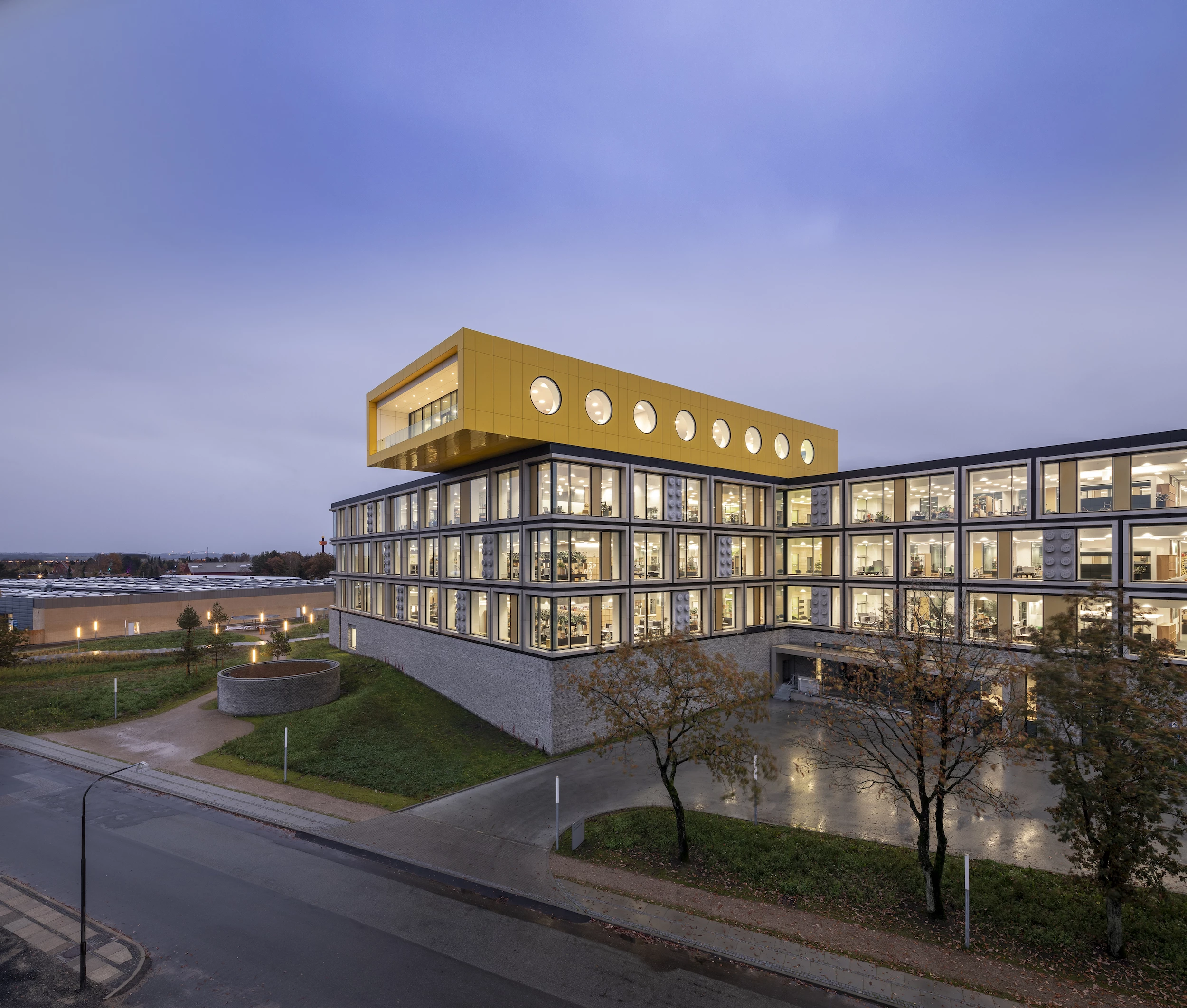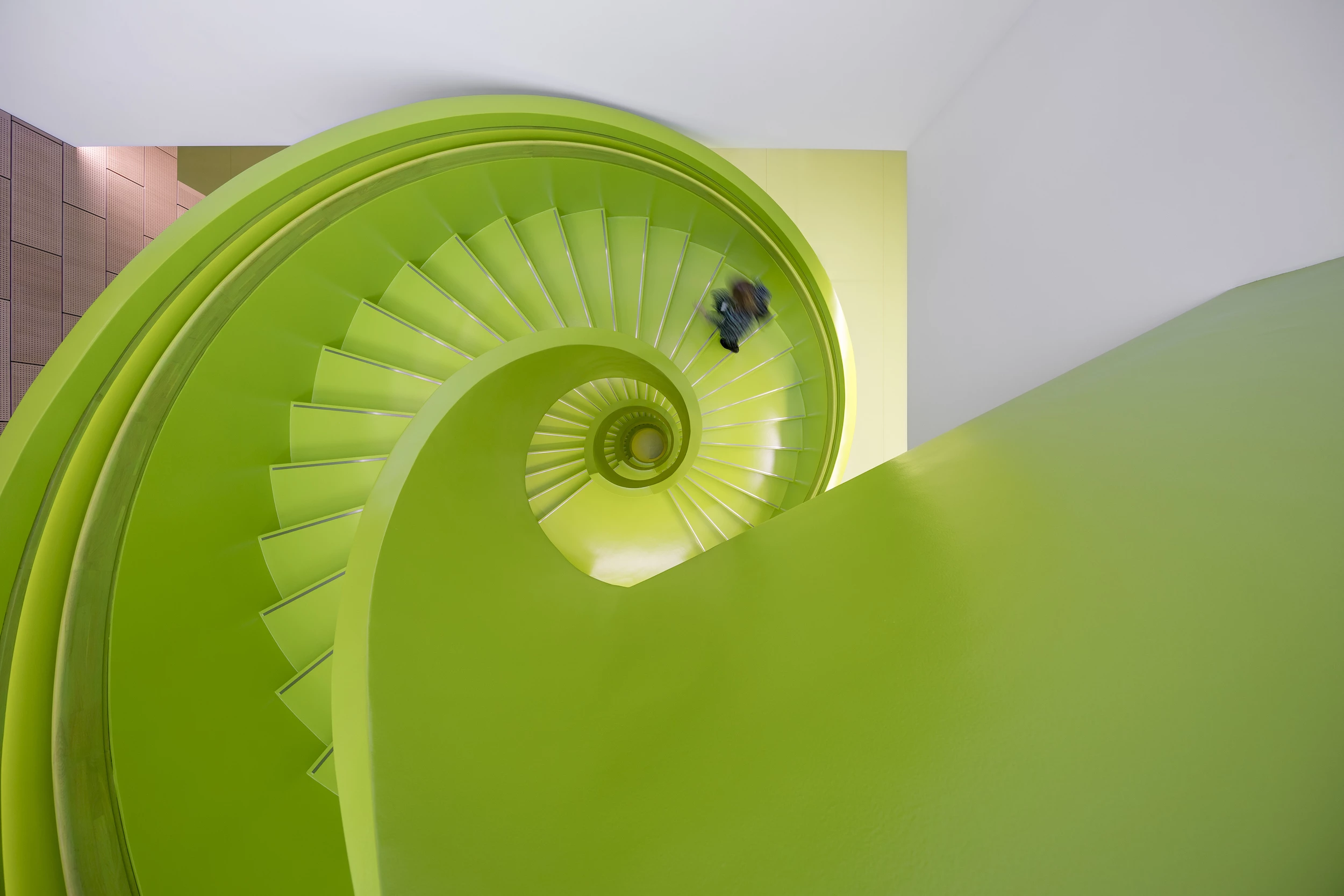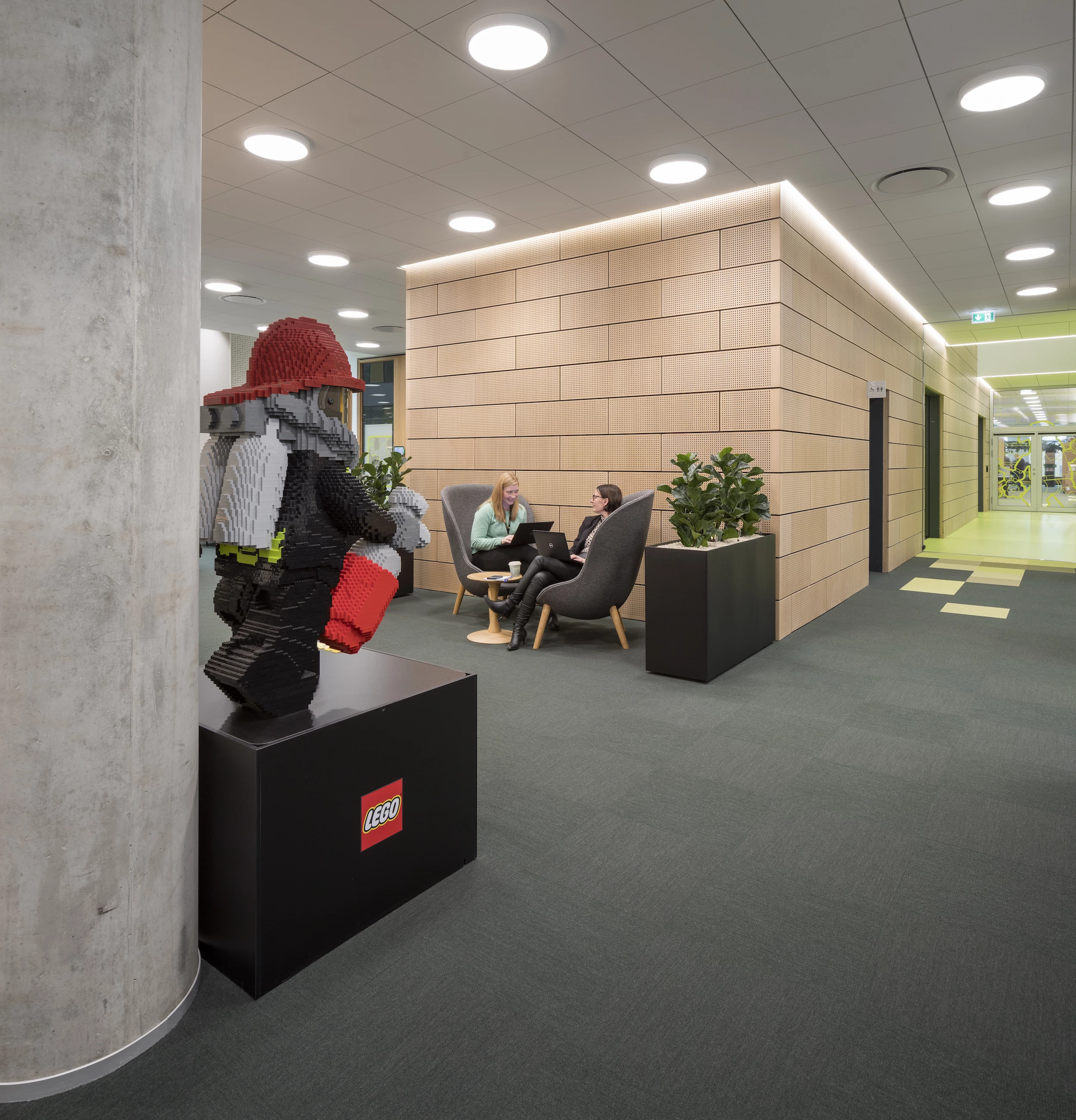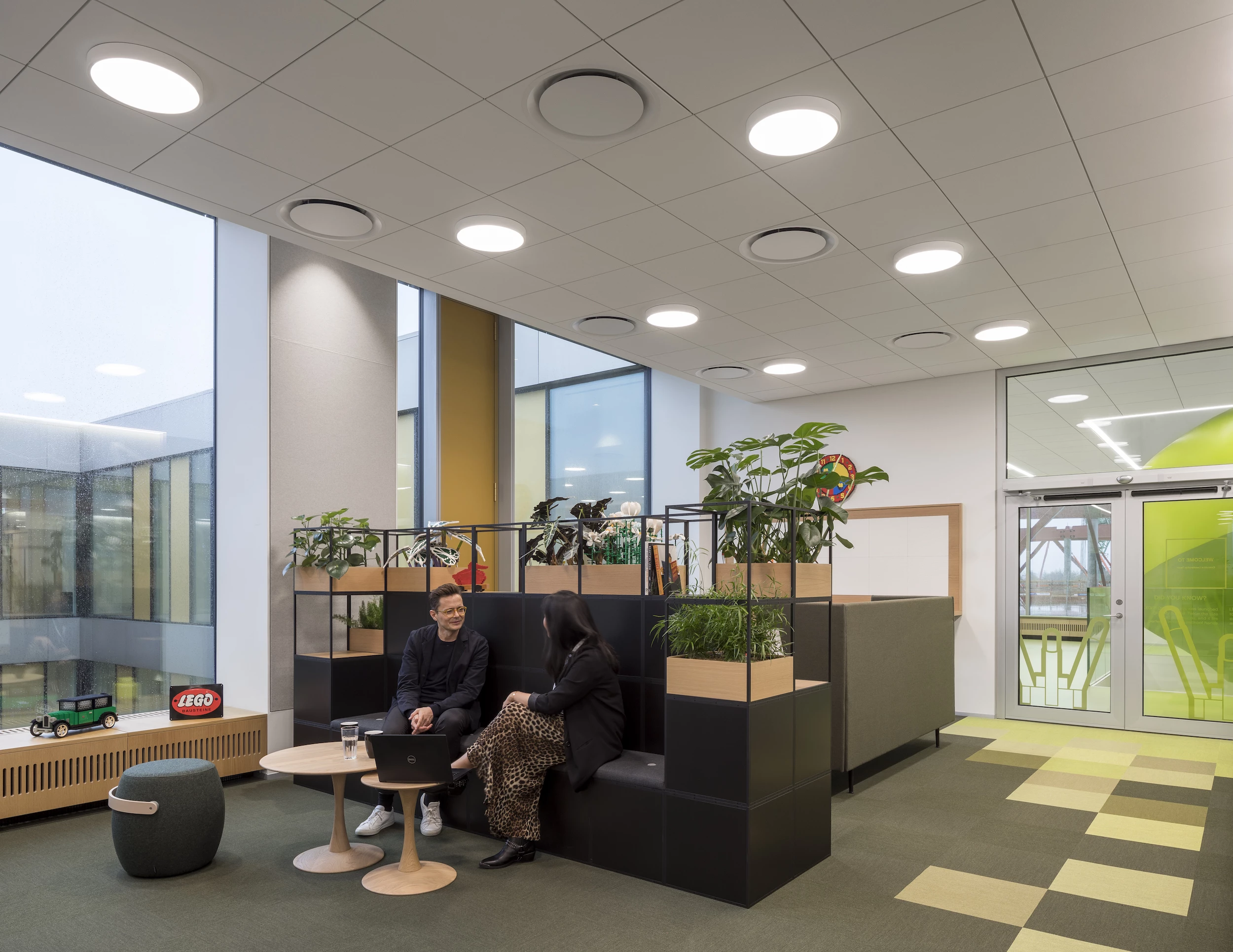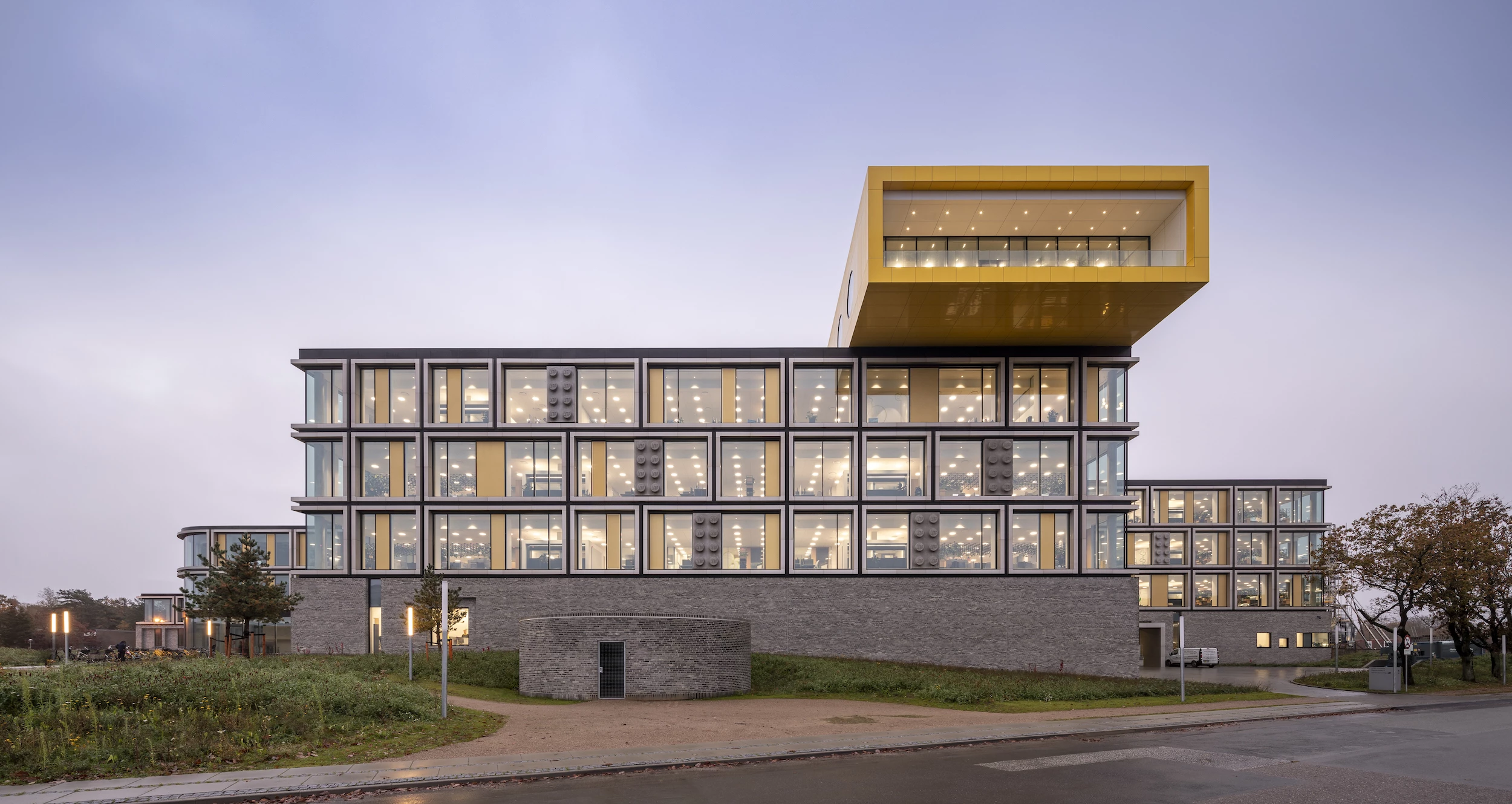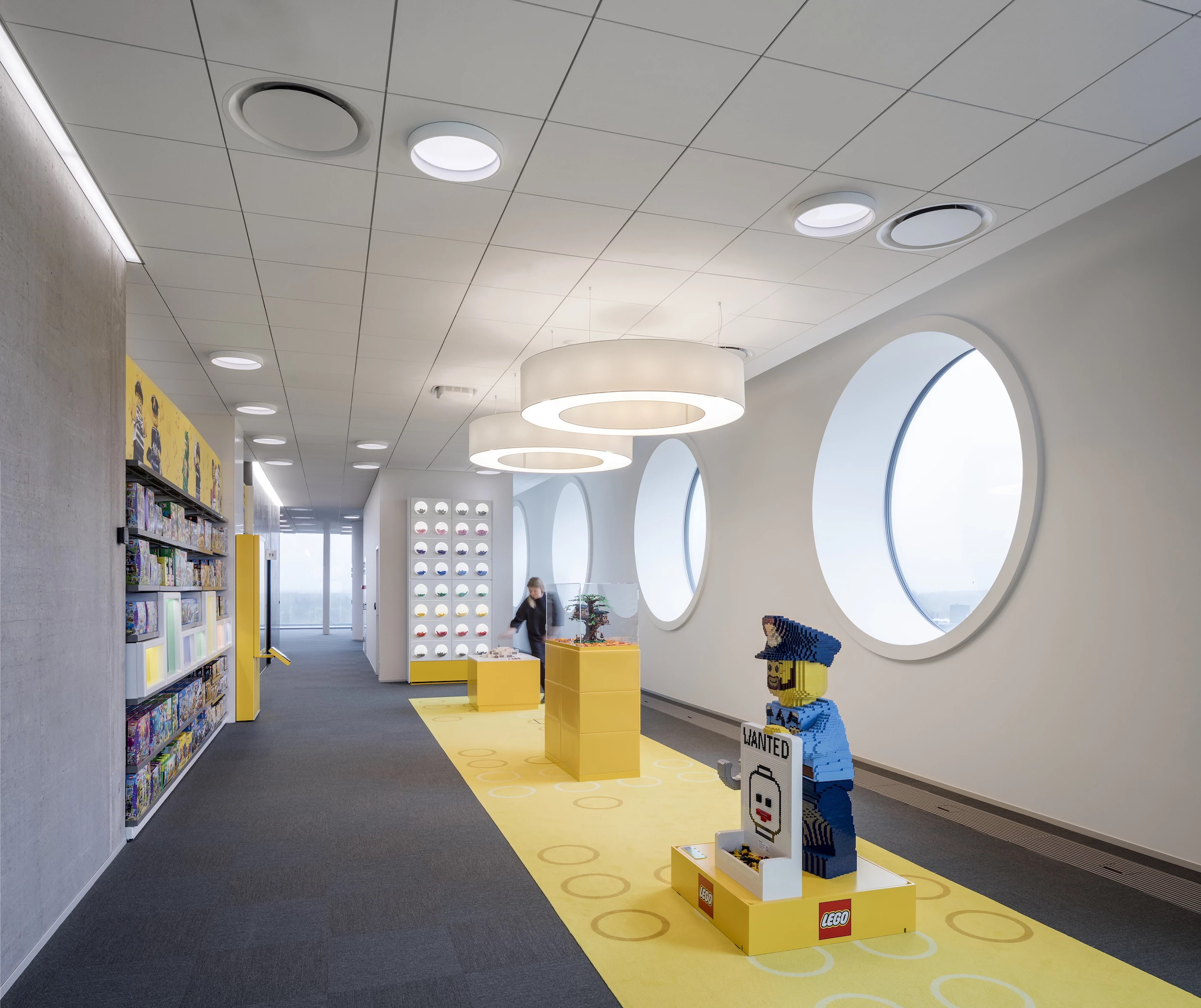C.F. Møller Architects has completed the first phase of a new campus for Lego in Billund, Denmark. Like BIG's Lego House, its design playfully riffs on the firm's own products and looks like it's partly built from oversized Lego bricks. It also boasts some green cred and gets half of its required electricity from solar power.
Though 500 staff have taken their desks at the Lego Campus, construction work is still ongoing and just two out of eight buildings are finished. The project is expected to be fully completed in 2021 and will span 54,000 sq m (581,000 sq ft) and host 2,000 workers.
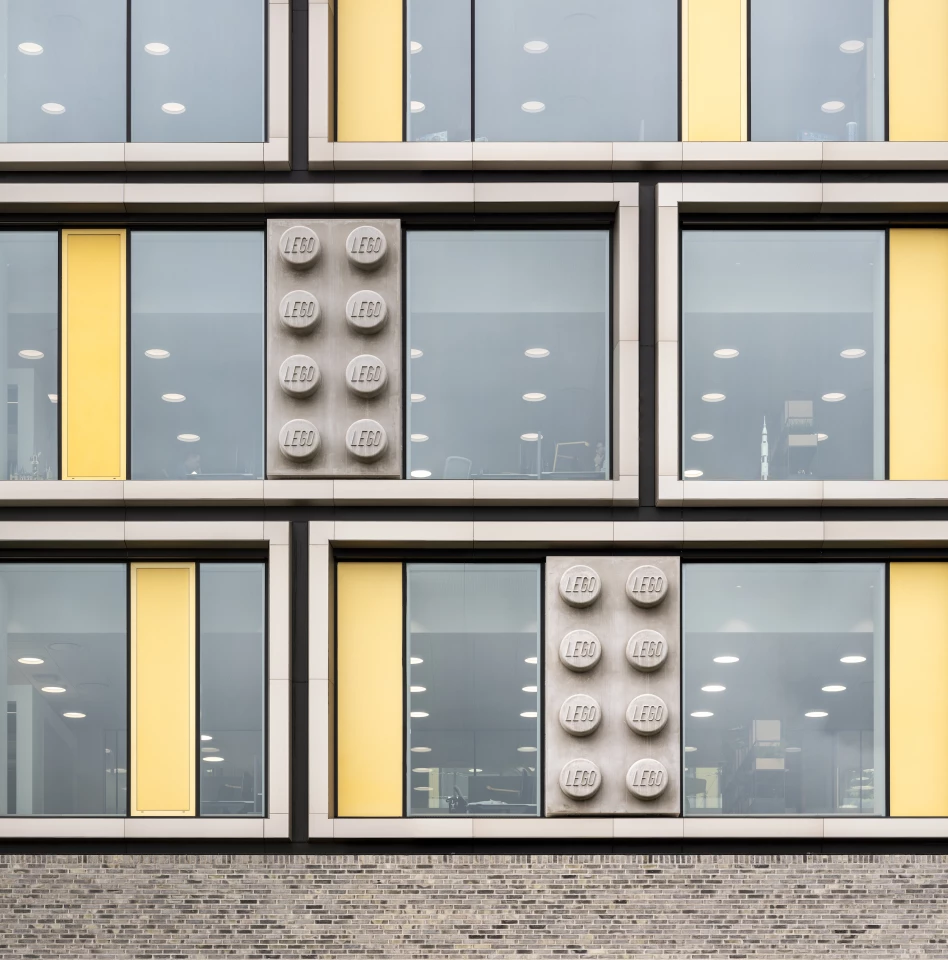
C.F. Møller Architects has incorporated what looks like Lego bricks into the main building's facade and designed roof sections to look like large yellow Lego bricks too, while an entryway also appears to be made completely of the plastic bricks. The interior of the building includes of Lego models and various figures. The decor is bright and colorful and is designed to be flexible and offer a mixture of spaces.
"In the same way you build with Lego bricks, we took elements our people love and brought them all together to create something unique," says Anneke Beerkens, Senior Workplace Anthropologist at the Lego Group. "For example, employees told us that they wanted the freedom to choose an environment that suited them best for whatever they were working on, but also liked to stay close to teammates. So we built team 'neighborhoods' which are a mix of individual and collaborative workspaces designed to create a caring environment where people can do great quality work."

C.F. Møller Architects has good form for sustainable projects and the Lego Campus is another example of the firm's green expertise. The campus' parking garage is covered with a total of 4,150 solar panels, which produce over a million kWh. This is expected to provide half of the required electricity of the campus, each year. The exterior of the garage is also designed to resemble Lego.
Additionally, some areas of the roofs are covered with plants which are used to absorb water and control rainwater runoff. Rainwater will also be collected and used to irrigate the extensive landscaping in the campus area.
Sources: C.F. Møller Architects, Lego

